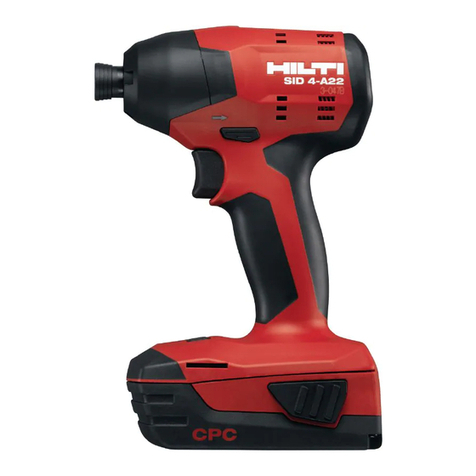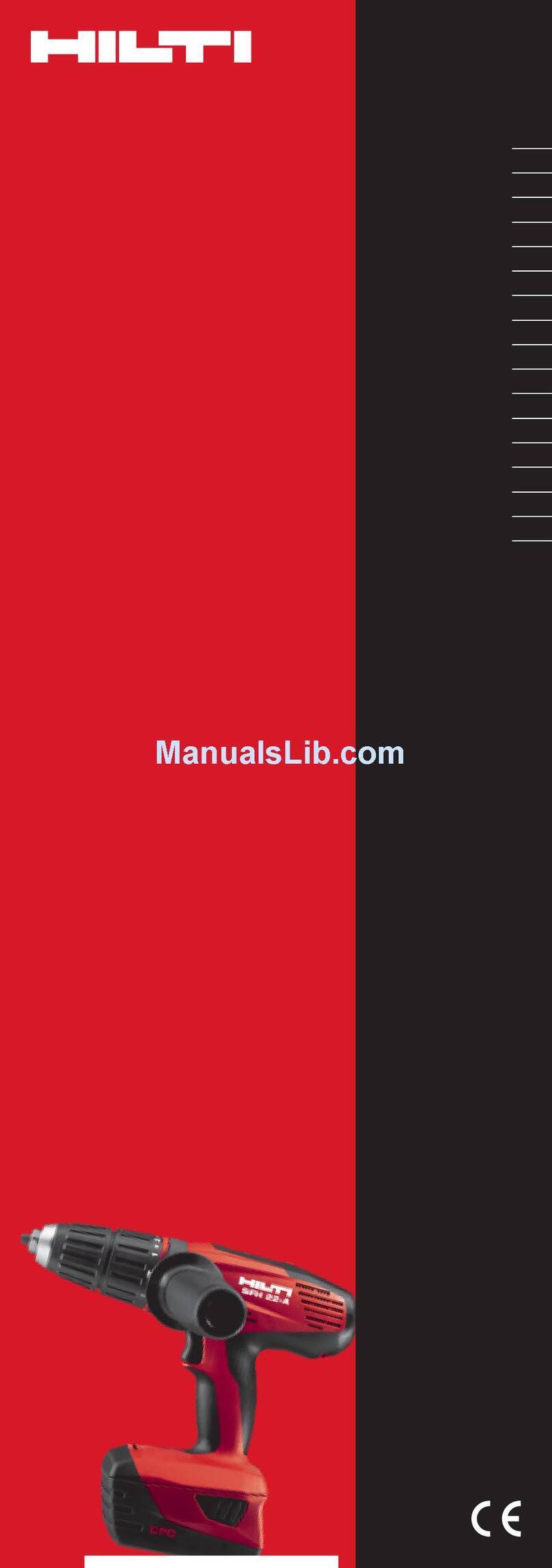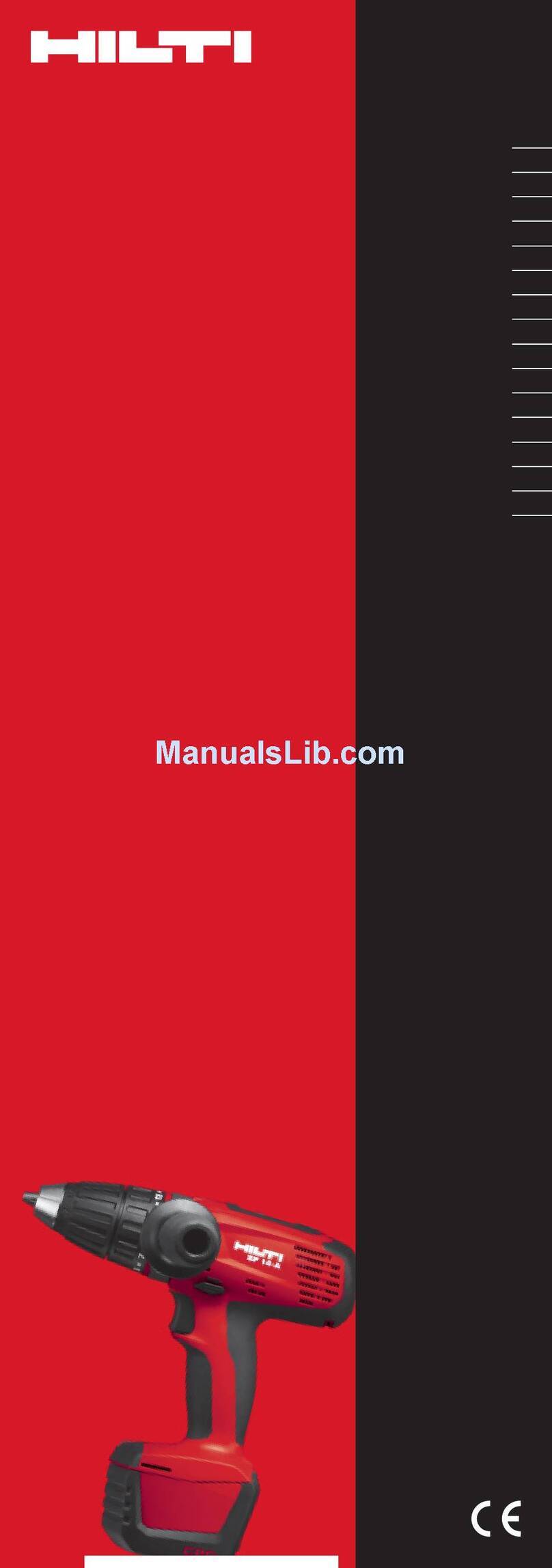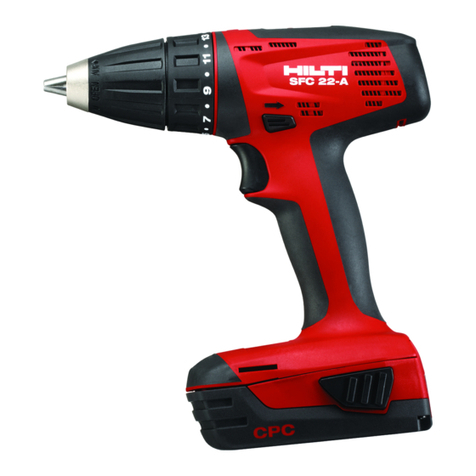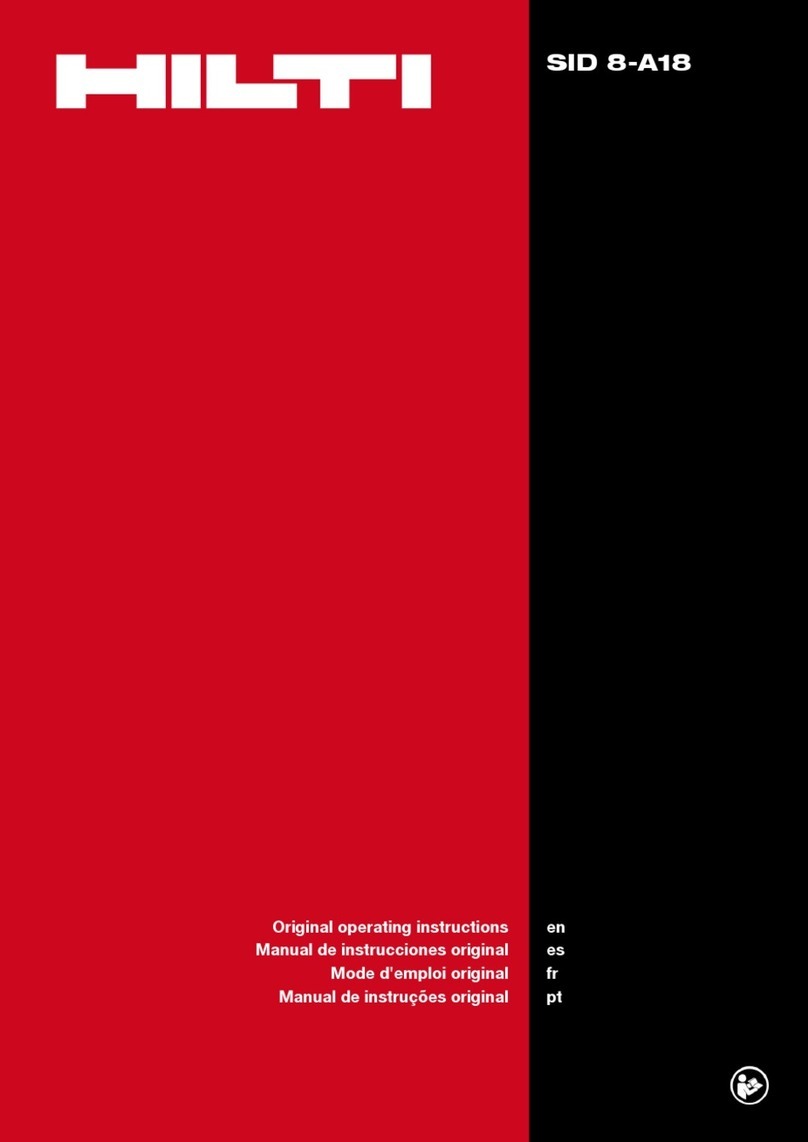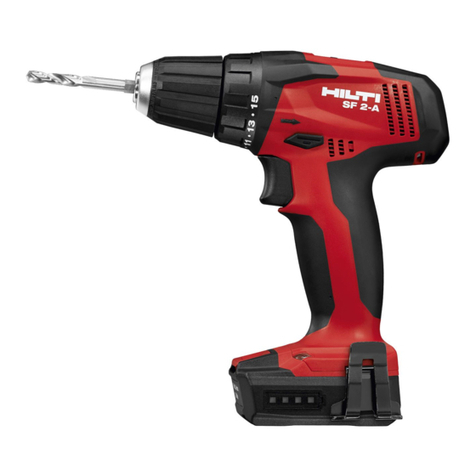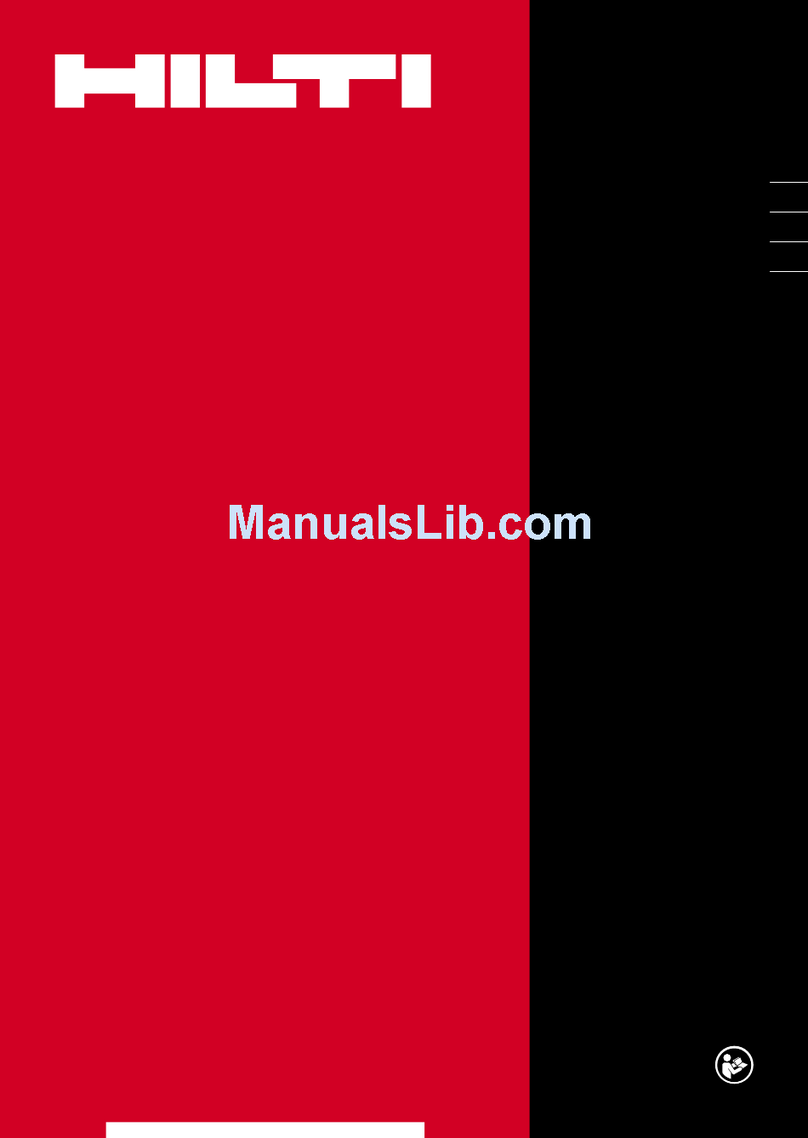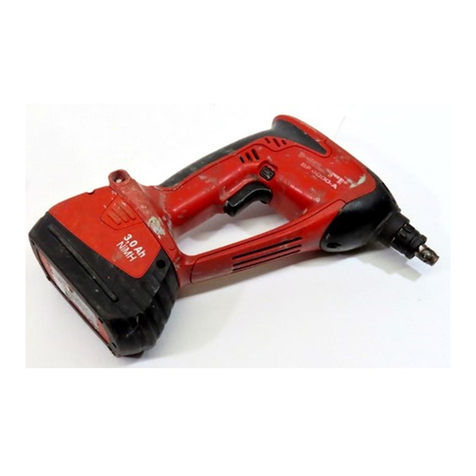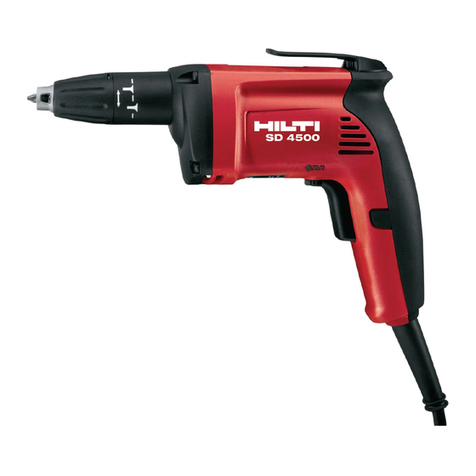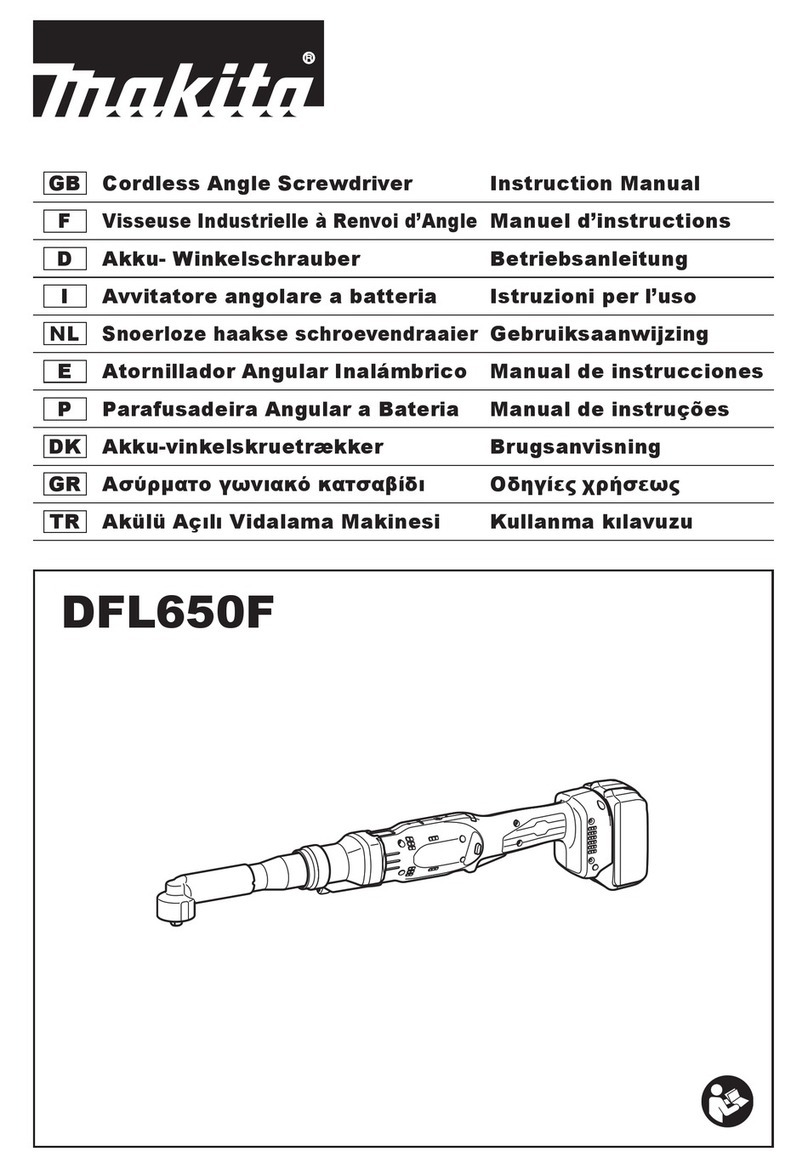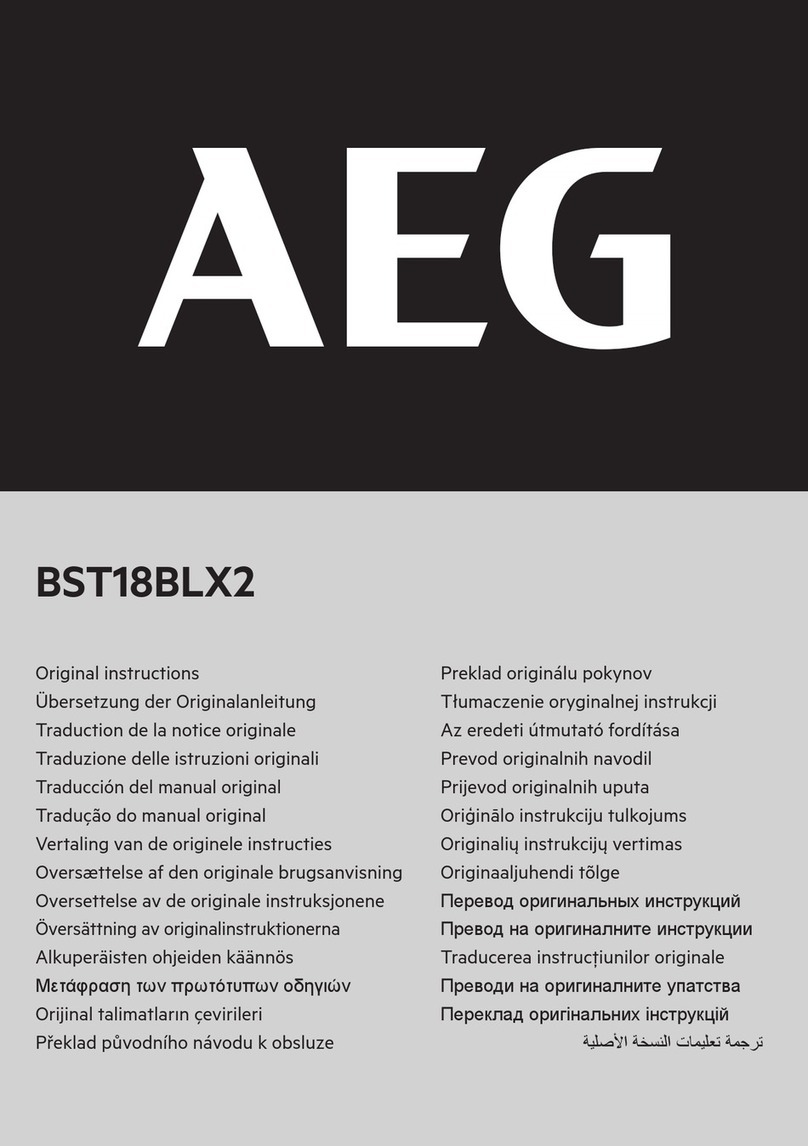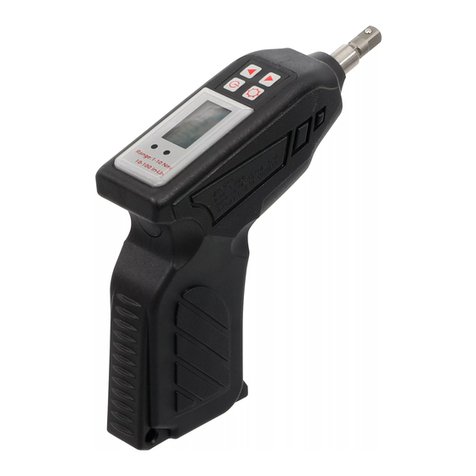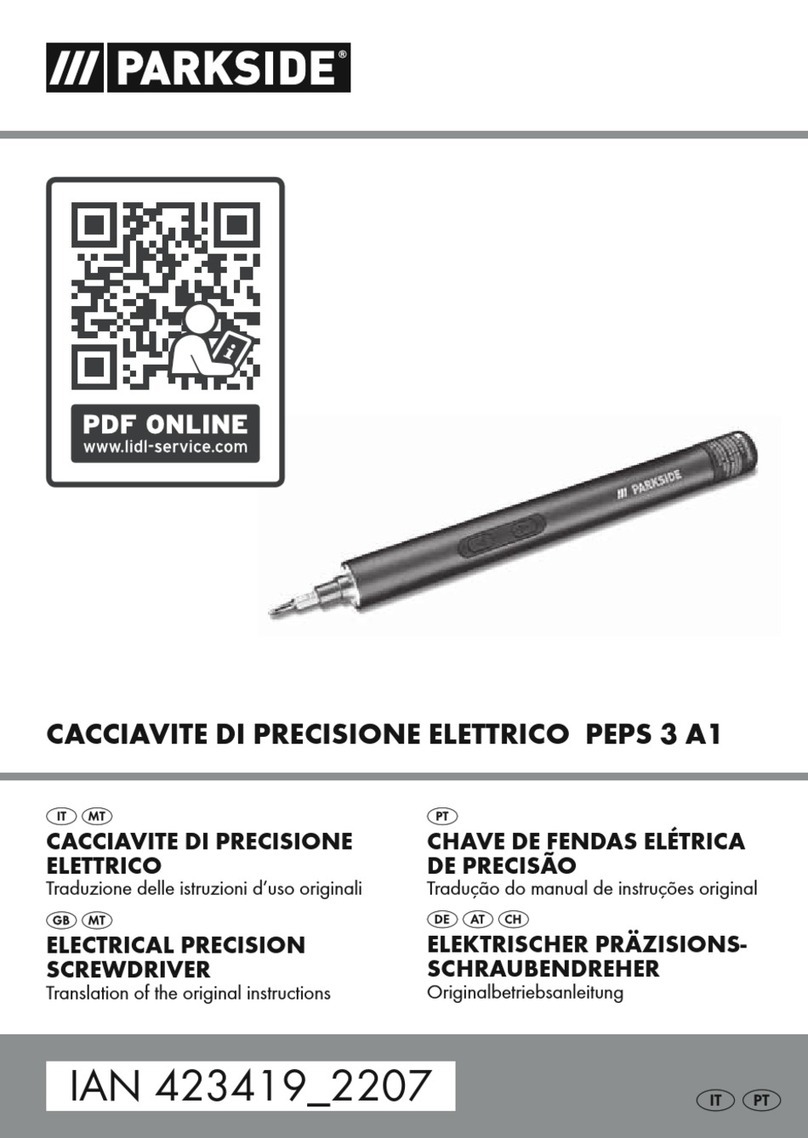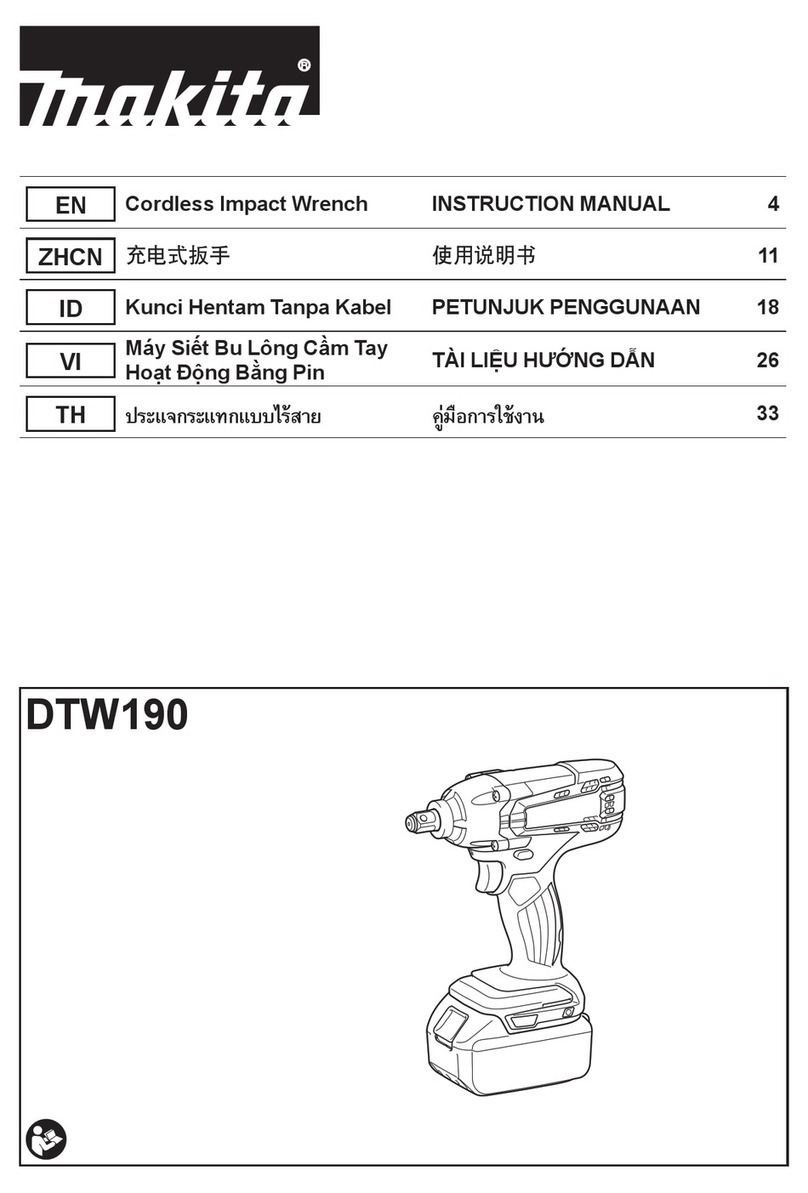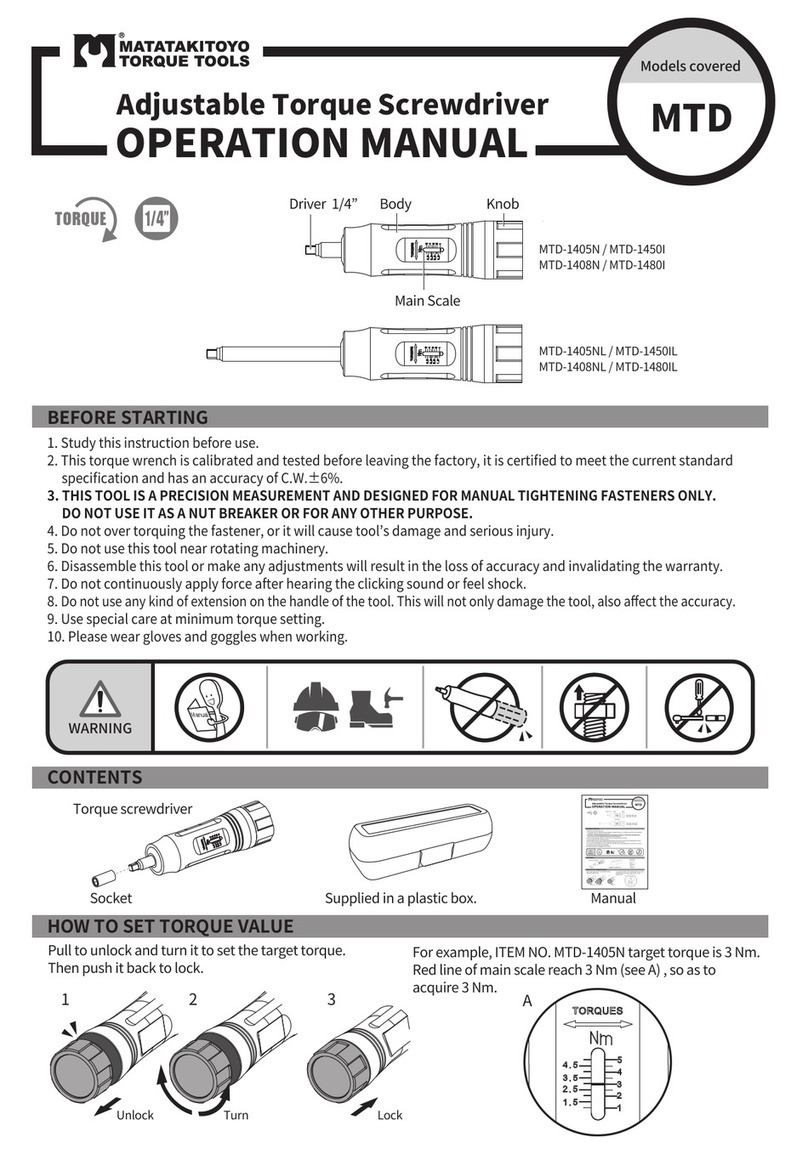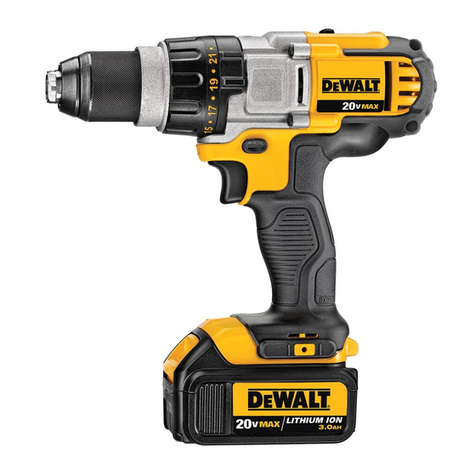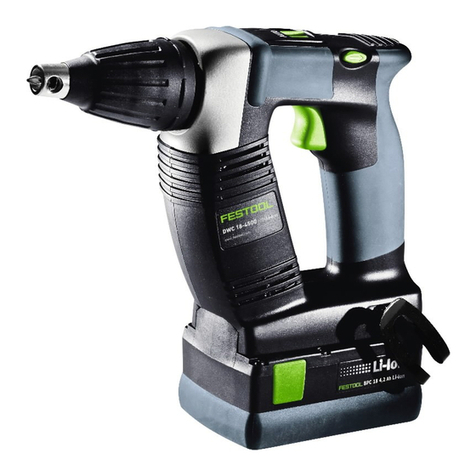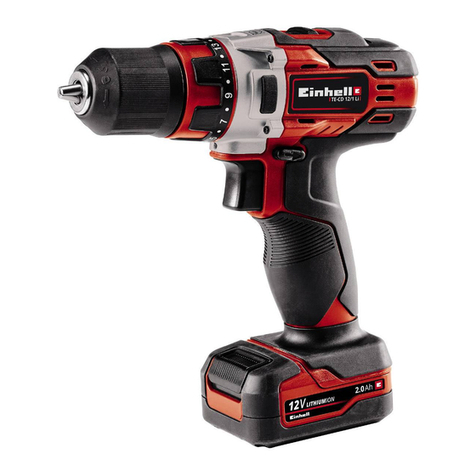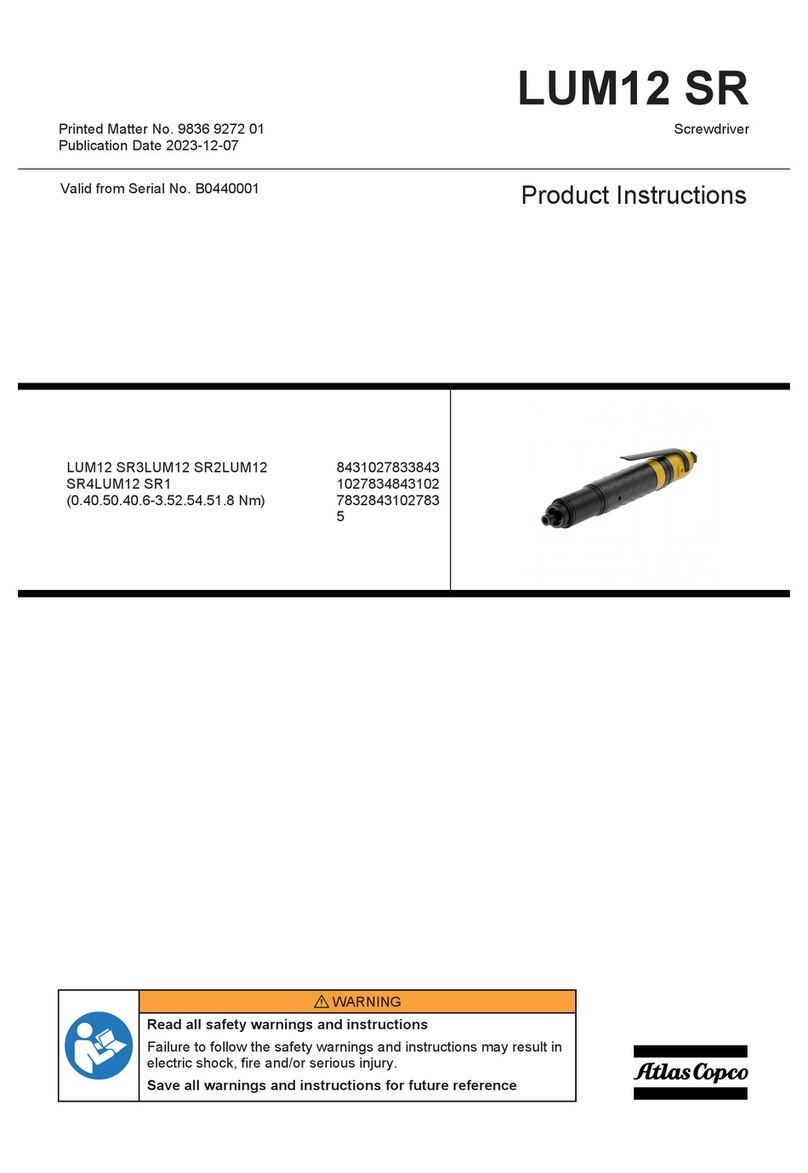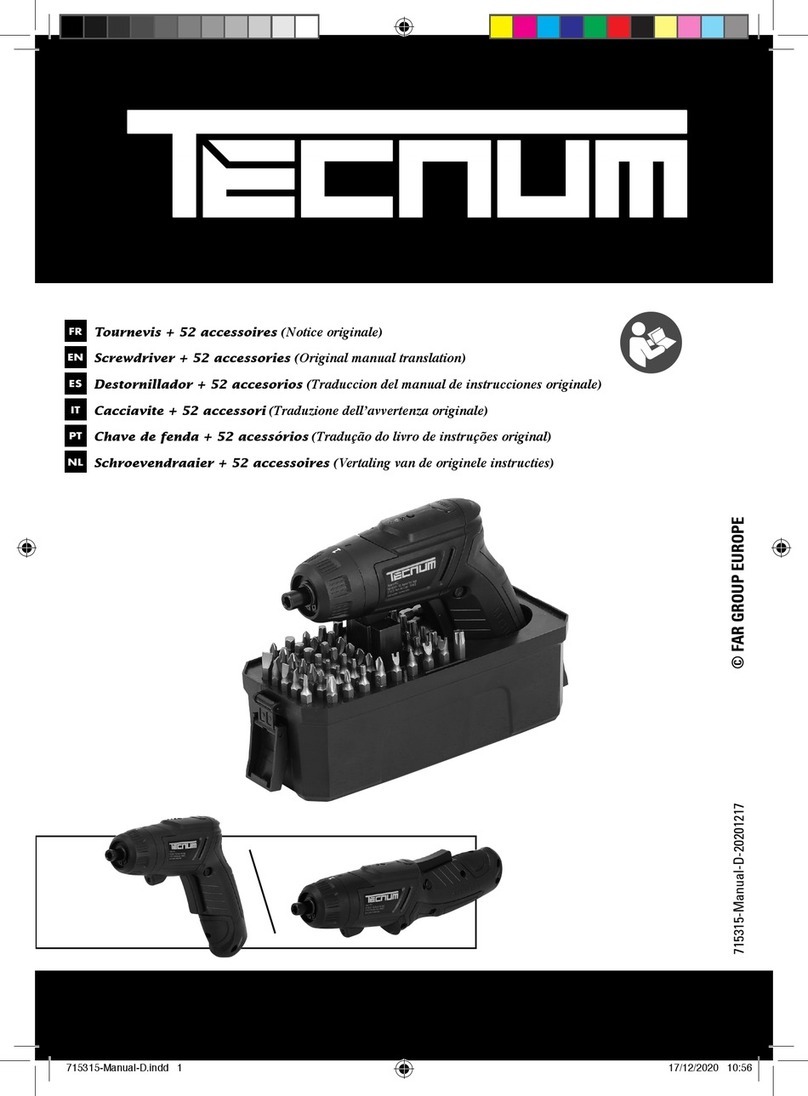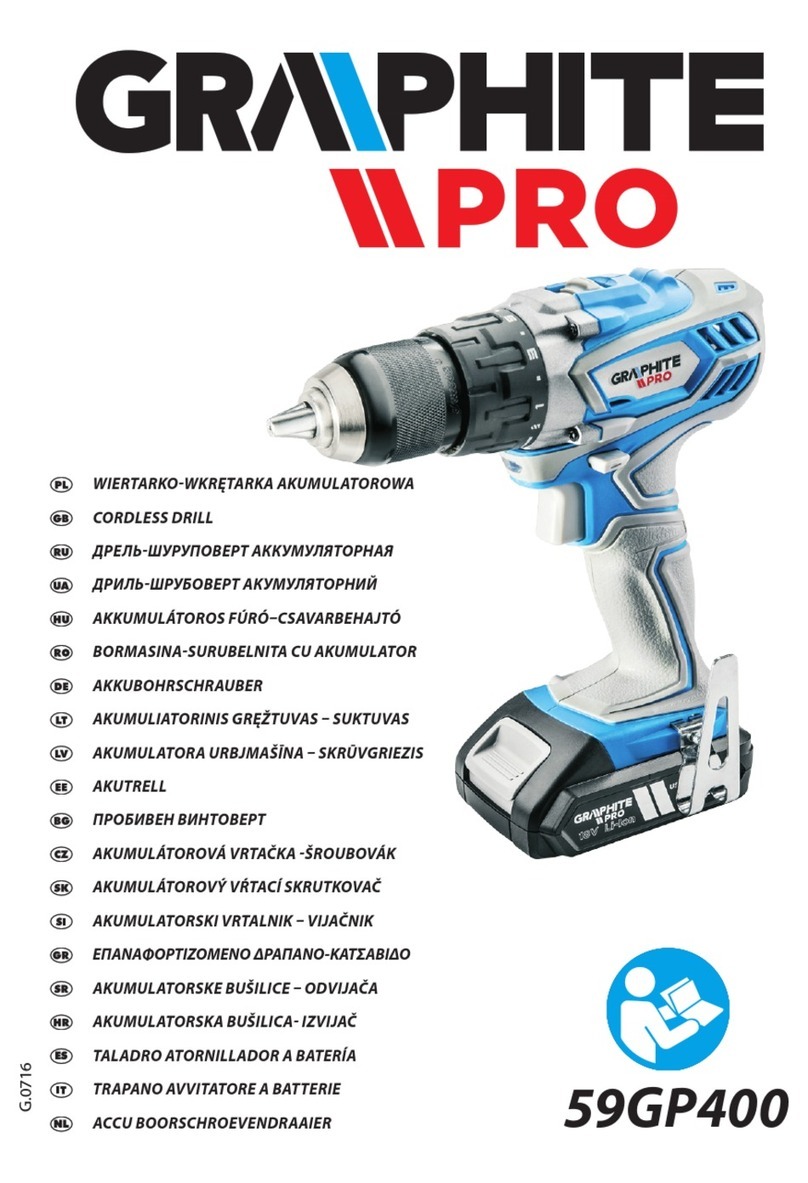
*2328838* 2328838 English 3
▶Wear suitable work clothes. Do not wear jewelry or loose clothing. Keep your hair, clothing and
gloves away from moving parts. Loose clothes, jewelry or long hair can be snagged by moving parts.
▶Do not lull yourself into a false sense of security and do not flout the safety rules for power tools,
even if you are familiar with the power tool after using it many times. Caress handling could cause
serious injury within fractions of a second.
Using and handling the power tool
▶Do not overload the tool. Use the correct power tool for your application. The correct power tool
will do the job better and more safely within the performance range for which it is designed.
▶Do not use a power tool if it has a faulty On/Off switch. Any power tool that cannot be controlled with
the switch is dangerous and must be repaired.
▶Disconnect the plug from the power outlet and/or remove a removable battery before making any
adjustments, changing accessories, or storing the tool. This precaution reduces the risk of the power
tool starting accidentally.
▶Store power tools out of reach of children when not in use. Do not allow persons who are not
familiar with the tool and these instructions to operate it. Power tools are dangerous in the hands of
inexperienced persons.
▶Maintain power tools and accessories carefully. Check that moving parts operate satisfactorily
and do not jam, and whether any parts are broken or so damaged that the correct operation of the
power tool is adversely affected. If parts are damaged, have the parts repaired before using of the
tool. Many accidents are caused by poorly maintained power tools.
▶Use power tools, accessories, insert tools, etc. only as described in this manual. Take the working
conditions and the work to be performed into account. Use of the power tool for operations different
from those intended could result in a hazardous situation.
▶Keep grips and gripping surfaces dry, clean and free from oil and grease. Slippery grips and gripping
surfaces do not allow the power tool to be safely operated and controlled in unforeseen situations.
Using and handling the cordless power tool
▶Recharge the batteries only with the chargers specified by the manufacturer. A charger that is
suitable for a certain type of battery may present a risk of fire when used with other types of battery.
▶Use only the specified batteries in power tools. Use of any other batteries may create a risk of injury
and fire.
▶When the battery is not in use, keep it away from paper clips, coins, keys, nails, screws and other
small metal objects that could cause bridging between the terminals. A short circuit between the
battery terminals may cause burns or a fire.
▶Liquid may leak from the battery if used incorrectly. Avoid contact with the liquid. If contact
accidentally occurs, flush with water. If the liquid contacts the eyes, also seek medical attention.
Liquid escaping from the battery can cause skin irritation or burns.
▶Do not use damaged or modified batteries. Damaged or modified batteries may behave unpredictably
and lead to fires, explosions or risk of injury.
▶Do not expose batteries to fire or excessive temperatures. Fires or temperatures over 130 °C (265
°F) may cause an explosion.
▶Follow all instructions on battery charging and never charge the battery or the battery-powered
tool outside the temperature range stated in the operating instructions. Incorrect charging or
charging outside the approved temperature range may destroy the battery and increase the risk of fire.
Service
▶Have your power tool repaired only by qualified,skilled personnel, using only genuine Hilti spare
parts. The safety of the tool can thus be maintained.
▶Never repair damaged batteries. All battery repair should only be carried out by the manufacturer or
authorized customer service centers.
2.2 Additional safety instructions
▶Use the product and accessories only when they are in perfect working order.
▶Never tamper with or modify the product or accessories in any way.
▶Risk of injury by falling tools and/or accessories. Before starting work, check that the battery and installed
accessories are secure.
▶Make sure that the product cannot roll away or fall down.
▶Do not transport the product by crane or with other hoists.
▶Operate the product only with the battery-compartment cover closed.
▶At temperatures below the freezing point, make sure that no water remains in the product. Freezing
water can cause damage when it expands inside components of the product.

